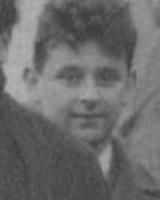Citizenship USA Awards Frederic Ives Medal Name Maximilian Herzberger | Spouse Edith Kaufmann Known for Superachromat lens | |
 | ||
Born March 17, 1899Berlin ( 1899-03-17 ) Thesis Ueber Systeme hyperkomplexer Grossen (1923) Notable awards Cressy Morrison Award (NYAS 1945), Frederic Ives Medal (OSA 1962) Books Modern Geometrical Optics, Modern Geometrical Optics, MODERN GEOMETRICAL OPTICS | ||
Maximilian Jacob Herzberger (7 or 17 Mar 1899, Berlin, Germany — 9 Apr 1982, New Orleans, United States) was a German mathematician and physicist, known for his development of the superachromat lens.
Contents
Life
Maximilian Herzberger was the son of Leopold Herzberger (born 7 Mar 1870, Krefeld — died in Rochester (NY)) and Sonja/Sofia Behrendt/Berendt/Berends (22 Mar 1876, Petersburg (Germany) — 28 Jan 1945, Florence); he had a sister Olga (24 Sep 1897, Berlin — 2 Aug 1922, Berlin). He studied mathematics and physics at the Berlin University, where Albert Einstein was one of his professors, and later became a friend and advisor. In 1923, Herzberger finished his Ph.D. thesis Ueber Systeme hyperkomplexer Grössen under Ludwig Bieberbach and Issai Schur at the philosophical faculty. In 1925, he married Edith Kaufmann (10 Oct 1901, Stuttgart — 16 Feb 2001, Carlsbad (California) or New Orleans); they had three children, born in Jena, viz. Ruth (born 1928), Ursula (1931), and Hans (6 Aug 1932, spouse of Radhika Herzberger). No later than Sep 1930, he was assistant of Hans Boegehold,(de) the chief of calculation office at Carl Zeiss Jena.
In 1934, the Nazis deprived him from his professorship at Jena University and his contract with Zeiss. He emigrated with his family to Rochester (NY), where he became head of Eastman Kodak's optical research laboratories, arranged by Einstein. In 1940, he and his family became U.S. citizens. In 1945, he got the Cressy Morrison Award of the New York Academy of Sciences.
In 1954 he finished the development of the superachromat as the ultimately well-corrected lens for Kodak. In 1962, he was awarded the Frederic Ives Medal of the Optical Society of America. In 1965, he retired from his position at Kodak, and helped building a graduate institute for optics in Switzerland, until in 1968 he followed invitation of the University of New Orleans to teach at their Physics Department.
He held patents for an "apochromatic telescope objective having three air spaced components", and a "superachromatic objective".
